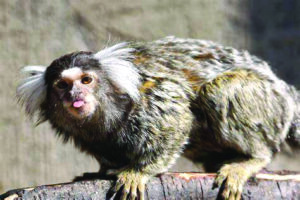By Dr. Beth Leermakers
In the animal kingdom, mothers handle most of the child care responsibilities. However, in about five percent of animal species, fathers help with child rearing. Among monogamous species, that percentage is higher, with both parents sharing childcare responsibilities in 59 percent of those species. In celebration of Father’s Day, let’s examine a few standout animal dads:
Seahorses
Mr. Mom — Literally!
Male seahorses get pregnant and carry eggs in their pouch until birth. Seahorses — monogamous fish that mate for life — are the only group of animals in which the males go through pregnancy.
Unlike most animal species, the male seahorse chooses his mate. In a multi-hour mating dance, the male and his chosen female link tails and twirl together under the water, often changing color. Then the female seahorse transfers hundreds of eggs to a pocket in the male’s abdomen (the brood pouch). The male fertilizes the eggs as they enter his brood pouch and then incubates them for 10-25 days until they are born. If the male decides he doesn’t really like the female, he may choose not to fertilize her eggs. Or he may absorb the eggs and associated nutrition into his body and start over with another female.
After the eggs hatch, the father keeps them in his brood pouch until they adjust to the ocean’s salinity. Research shows that the male seahorse’s brood pouch, which can hold up to 1000 babies at a time, develops and functions like a human placenta.

Photo courtesy of Suzy’s Animals of the World blog
Marmosets
Midwives and Nannies
Marmosets, a South American primate, are socially monogamous, with committed couples giving birth to two sets of twins every year. Marmosets use cooperative breeding strategies, meaning that adults other than the mother help care for the babies. Marmoset mothers nurse their young, but nearly all other caregiving is provided by other adults, typically the dad. After delivering twins, marmoset moms don’t have the energy to care for their young — and they will soon be pregnant again.
Marmoset fathers play an active role during the delivery of their babies, cleaning up the afterbirth and biting off the umbilical cord. They care for their newborns, licking and grooming them while their mother recovers from labor. The father stays by his babies’ side, feeding them and carrying them on his back until they’re strong enough to travel independently.
Research indicates that male marmosets who are caring for young undergo hormonal changes (e.g., increases in prolactin and decreases in testosterone and cortisol) that prevent him from being aroused by other females when he has babies to tend to. Those changes also nudge the male marmoset to race to soothe other marmoset baby cries, even if they’re not his own offspring.
Red Foxes
Meal Delivery Service and Survival Skill Trainers
Red foxes mate in the winter, and female red foxes give birth to one to 12 pups per litter. Males and females care for the young until the fall, when the pups strike out on their own. After she gives birth, she stays in her den to nurse her young and keep them warm. The father must leave the den every six hours or so to hunt for food (rodents, rabbits, birds, amphibians and berries) for himself and his family.
After about three months, the father stops feeding the pups to encourage them to leave the den. He doesn’t just leave them to fend for themselves. Father fox buries food close to the den to teach the cubs how to sniff and forage for food. By playing and roughhousing with his pups, the red fox father teaches the pups survival skills such as how to hunt and escape predators.
Ostriches
No Hiding from Daddy Duty
Ostriches live in herds of about 12 birds, including the dominant female (hen) and alpha male. The dominant hen will only mate with the alpha male, but he also mates with other females in the herd. During mating season, the alpha male builds a communal nest (a dump nest) in the ground and attracts females by dancing. The hens lay their giant eggs (up to six inches in diameter and weighing three pounds) in the dump nest, which may contain 60 eggs. The dominant hen lays up to 11 eggs (in the center of the nest where they’re safest), and the other hens lay two to six eggs.
The alpha male and dominant hen take turns incubating the eggs for about 40 days until they hatch. The newborn ostrich chicks, which are as big as a chicken, are feathered and ready to walk. Within a few days the chicks leave the nest and follow their parents. Males and females both care for the ostrich chicks, protecting them from the sun and rain by keeping them huddled under their body or outstretched wings. The father lures predators away from the chicks while they and the female run away.
Happy Father’s Day to the men who love and care for their two- and/or four-legged children!
